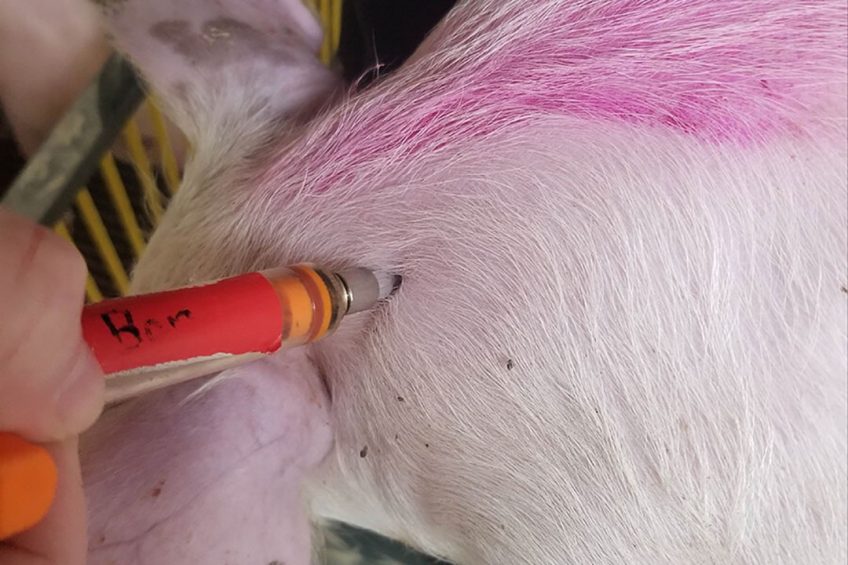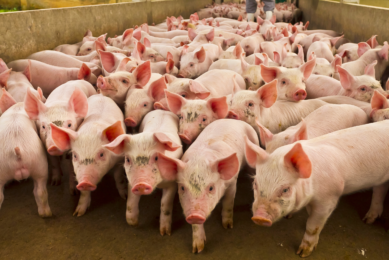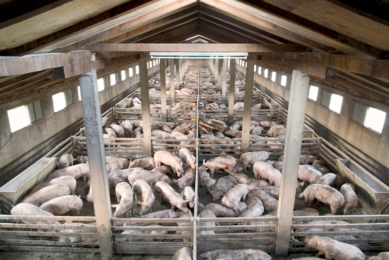US antibiotics usage: the numbers explained

In the United States, the usage of medically important antimicrobials on swine farms dropped to historical lows after a major directive came into effect in 2017. It is expected that new health-related on-farm technologies and alternative therapies will help it stay there.
Along with the swine industries in other countries, the US swine sector has taken serious steps to decrease the use of medically important antimicrobials (MIA). One big step came on 1 January 2017 when the Veterinary Feed Directive (VFD) came into effect, providing veterinarians across the country with a framework for authorising MIA use in feed. In addition, US pork producers use a programme called PQA Plus to help them manage antibiotic use, reinforced by the National Pork Producers Council in its Pork Industry Guide to Responsible Antibiotic Use.
Because of these initiatives, MIAs sold in the US for pigs (in terms of active drug ingredients purchased and given orally or by injection) dropped from 3.1 million kg in 2016 to 2.0 in 2017. That became clear from the Annual Summary Report on antimicrobials sold for use in food-producing animals: key findings for swine producers, which was released in late 2020. This report by Michigan State University authors builds on the annual summary report by the US Food and Drug Administration (FDA), which was released in 2019, analysing data from 2018.
Dr David Thompson, an extension swine educator at Michigan State University extension services, is one of the report’s authors. He notes that, while there was a dramatic usage decrease in 2017, there was a significant increase in 2018 of 17% – and another rise of 8% in 2019 (from the most recent FDA report).
The usage rise in 2018 is due to a few factors, including a pork production increase of 3% that year over 2017. Most of the increased use came in the form of tetracyclines, and Dr Thompson and his colleagues hypothesise that farmers have been reintroducing this antibiotic in both feed and water to combat scours. However, from analysing comments from a 2018 survey of producers, they also think that “producers are using antibiotics because they need them for preventing/treating illness, and not for purposes directly related to performance”.
Below historic averages
Dr Thompson and his colleague and co-author Elizabeth Ferry also note that 97% of sales of MIAs for use in pigs in 2018 were under a veterinarian’s prescription and/or under a VFD. They conclude that overall, use of antibiotics for swine production – in light of the amount of pork produced – “remains well below historical averages, and suggest US pork producers remain committed and on the right track in their antibiotic stewardship efforts”.
Dr Thompson’s team has applied for funding to do a follow-up survey; if the funding is received this spring, they will target Midwest swine veterinarians and the 2,000 pork producers (of all sizes) who belong to the Michigan Pork Producers Association. “It will be designed to tease out how policy and farmers’ efforts to use less MIAs is affecting pig health and performance, and what changes in farm management practices veterinarians and Michigan producers have adopted in order to mitigate those impacts,” explains Dr Thompson. “Based on that input, there will be an outreach component that emphasises science/evidence-based and best practices that promote management over medication.”
Dr Chris Rademacher can provide some further insight about “management over medication” in the US pig herd since VFD implementation. Dr Rademacher is a clinical professor of veterinary diagnostic and production animal medicine at Iowa State University and chair of the American Association of Swine Veterinarians Pharmaceutical Issues Committee. He says one of the outcomes of the implementation was that it opened up discussion between producers and their veterinarians about mass medication using MIAs, particularly at growth-promotion levels in finishing. It has also allowed, he says, “discussions about improvements in biosecurity (particularly in the growing pig herds), sanitation and improvements in management as a way to improve overall herd health.”
In terms of how VFD implementation has affected prevalence and severity of pig disease in the US herd, Dr Rademacher says that based on his communications with many US swine veterinarians, “changes in disease prevalence and patterns were negligible” in 2018 and onward.
Labour and technology
More intensive management – proper biosecurity, cleanliness and managing herds more closely to better detect and manage illness – is very much related to farm labour. According to Dr Thompson, there is a “huge and growing” farm labour shortage in the US. He explains that “even if we are able to sort out all the legal/immigration issues, there will likely be a shortage of folks willing to do this type of work, at least in its current form. However, I think an increasing portion of the daily routine/repetitive and physically challenging work on pig farms will be addressed effectively by precision livestock farming technologies.”
Crop farmers, says Dr Thompson, have already reaped vast benefits from implementing precision technologies, but livestock farmers have been more cautious. In addition, much of the precision tech for livestock farming is still in the relatively early development stages. “Automatic feeders and milking systems are good examples already in use, but the bigger steps forward, in terms of changing the labour equation and antibiotic use, especially for pig producers, are likely to come in the form of video-imaging/tracking systems that will help producers move human inputs to where they are needed on farms,” Dr Thompson explains, “by identifying diseased/sick or lame animals, or animals showing excessively aggressive behaviour.”
Overall, however, at this point Dr Thompson believes that US livestock producers understand why it’s important to reduce reliance on MIAs and to move more towards an individualised pig care model. “During the past ten to 15 years the industry has embraced the science and adapted their farm biosecurity practices to PRRSv [Porcine Reproductive and Respiratory Syndrome], PEDv [Porcine Epidemic Diarrhoea virus] and now ASF [African Swine Fever] (and Covid-19 for their staff),” he says, “and are well along to making the adjustments needed to meet VFD guidelines for reduced antibiotic use.”
Non-MIA use and antimicrobial alternatives
In the US, sales of non-MIAs such as ionophores increased by about 5% in 2018 for all livestock, but the sales dropped back down by the same amount in 2019. No one is sure how much was used in pigs because these medications are not medically important to human health; therefore, their use is not tracked carefully and a breakdown by species is not available. However, Dr Rademacher can say that use of some non-MIAs (particularly Narasin) in US pig production did increase slightly in 2018, but he adds that “many US producers found that they could eliminate the use of low levels of antibiotics used for growth promotion and didn’t notice any significant change in performance”.
Dr Thompson does think there would be “a strong market for non-antibiotic approaches to prevent scours in pigs, especially if they could be delivered in-feed or water and delivered consistent benefits”. And while he’s not aware of a pro- or prebiotic currently marketed for pigs that consistently delivers scour-prevention efficacy similar to antibiotics, he says “there is a lot of good research now”.
Dr Rademacher adds that one of the biggest challenges for many of the bacterial disease problems in US swine farming is the lack of truly efficacious vaccines that could replace antibiotic use. “We did see an increase in the implementation of the commercial vaccines for Lawsonia intracellularis (ileitis) that was used to replace some medically important feed medications,” Dr Rademacher reports. “We also have seen renewed interest in autogenous vaccines for respiratory bacteria (Glaesserella parasuis or Streptococcus suis) with mixed results.”











